Five things you’ll want to cook as it starts to get warmer
Why not use the barbecue for a fast and tasty weeknight dinner, says Emily Weinstein. Plus a delightful Venezuelan sauce, an end-of-spring pasta, dumplings for days and an ode to parsley in this week’s meal plan

Your support helps us to tell the story
From reproductive rights to climate change to Big Tech, The Independent is on the ground when the story is developing. Whether it's investigating the financials of Elon Musk's pro-Trump PAC or producing our latest documentary, 'The A Word', which shines a light on the American women fighting for reproductive rights, we know how important it is to parse out the facts from the messaging.
At such a critical moment in US history, we need reporters on the ground. Your donation allows us to keep sending journalists to speak to both sides of the story.
The Independent is trusted by Americans across the entire political spectrum. And unlike many other quality news outlets, we choose not to lock Americans out of our reporting and analysis with paywalls. We believe quality journalism should be available to everyone, paid for by those who can afford it.
Your support makes all the difference.If you are the owner of a barbecue, what a fast and delightful way to make dinner on a weeknight.
Even if you don’t do anything fancy with it, it’s nice to just put some sausages or fish on there at twilight. (For the grill-less, these recipes work well in the oven, too.)
And no matter how you prepare them, spring’s bright ingredients are a delight. Here are the five dishes to cook this week.
Garlic chicken with guasacaca sauce
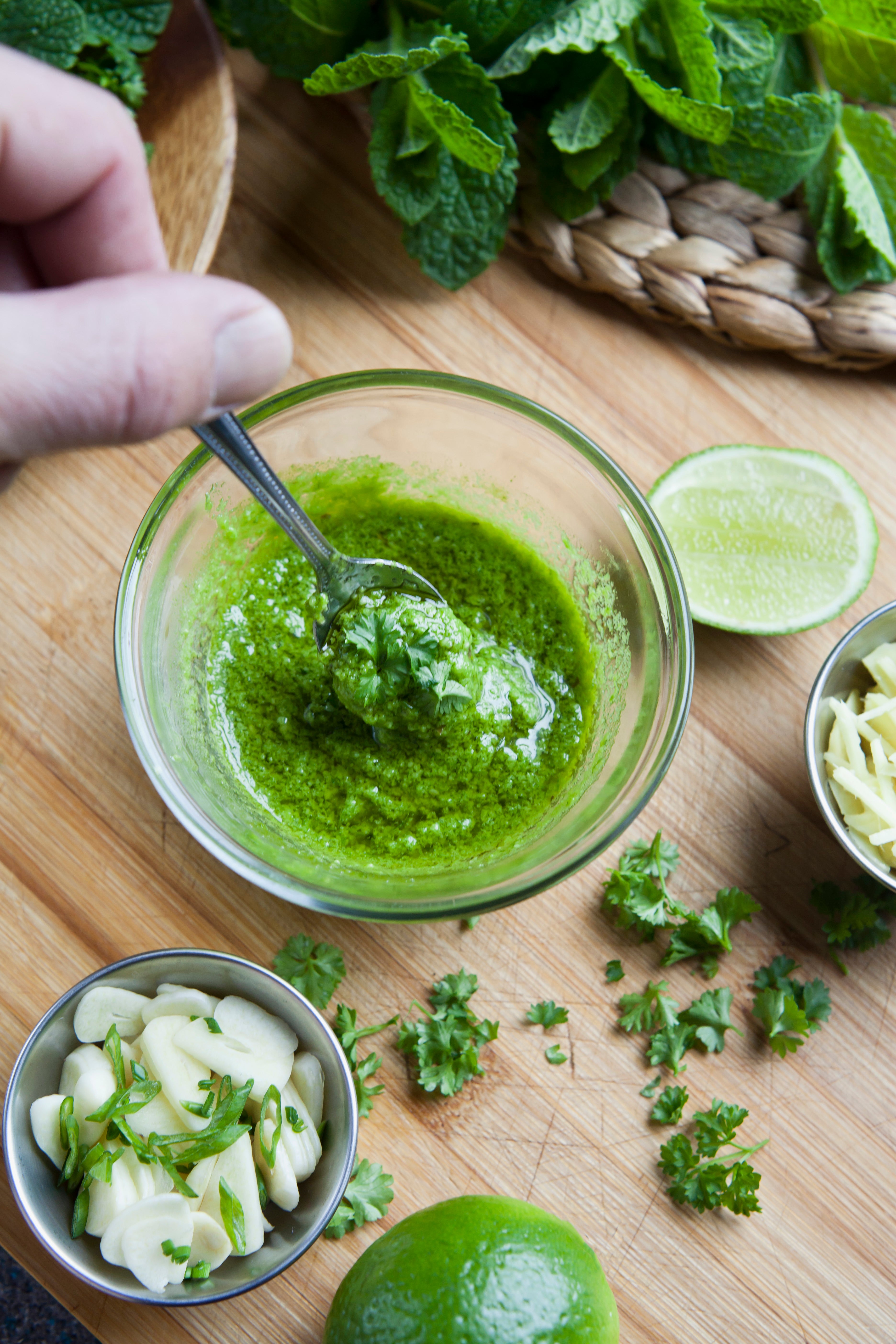
Simple to make, versatile in use and complex in flavour, guasacaca sauce is one of the wonderful condiments of Venezuelan cuisine. Creamy from the addition of avocado with a bright and tangy herb and lime base, it makes an evocative pairing for any vegetarian, seafood or meat dish. Here, it accompanies a baking tray dinner of roasted chicken and carrots but will do just as well with anything from the grill.
By: Yewande Komolafe
Makes: 4 servings
Total time: 45 minutes
Ingredients
125ml olive oil
3 large garlic cloves, peeled
680g carrots, scrubbed, trimmed and cut into 5cm lengths (1.5cm wide)
Salt and black pepper
1-1.5kg bone-in, skin-on chicken thighs, drumsticks, breasts or a combination, patted dry
1 avocado, pitted and chopped
1 jalapeno, stemmed and chopped
2 tbsp rice vinegar
Zest and juice of 1 lime
20g chopped parsley leaves with tender stems
20g chopped coriander leaves with tender stems
Method
1. Heat oven to 220C. In a medium bowl, combine half the oil and grate in 2 garlic cloves using a zester. Add the carrots and toss to coat. Lightly season with salt and black pepper and transfer to a baking tray, reserving the garlic oil in the bowl. Add the chicken to the bowl and coat with the remaining garlic oil. Arrange in a single layer on the tray skin-side up between the carrots.
2. Roast until carrots are tender, and chicken is cooked through with crispy skin that’s browned in spots, 35 to 40 minutes.
3. While the chicken cooks, in a food processor or blender or using a mortar and pestle, combine the avocado, jalapeno, vinegar, lime zest and juice, remaining garlic clove, half the chopped parsley and coriander, ½ teaspoon salt and ¼ teaspoon black pepper. Purée or pound into a coarse mixture. With the machine running or while mixing with a pestle in a mortar, slowly drizzle in the remaining olive oil and 1 tablespoon room temperature water. Purée or stir until the sauce is smooth and creamy. Taste and adjust the seasoning with additional salt if necessary. The sauce can be made a few hours in advance and refrigerated in an airtight container.
4. Scatter the remaining parsley and coriander over the chicken and carrots. Transfer to individual plates along with any pan juices. Spoon a few tablespoons of the guasacaca sauce on the side for dipping. Serve warm with additional sauce on the side.
Read more:
Pasta primavera with asparagus and peas
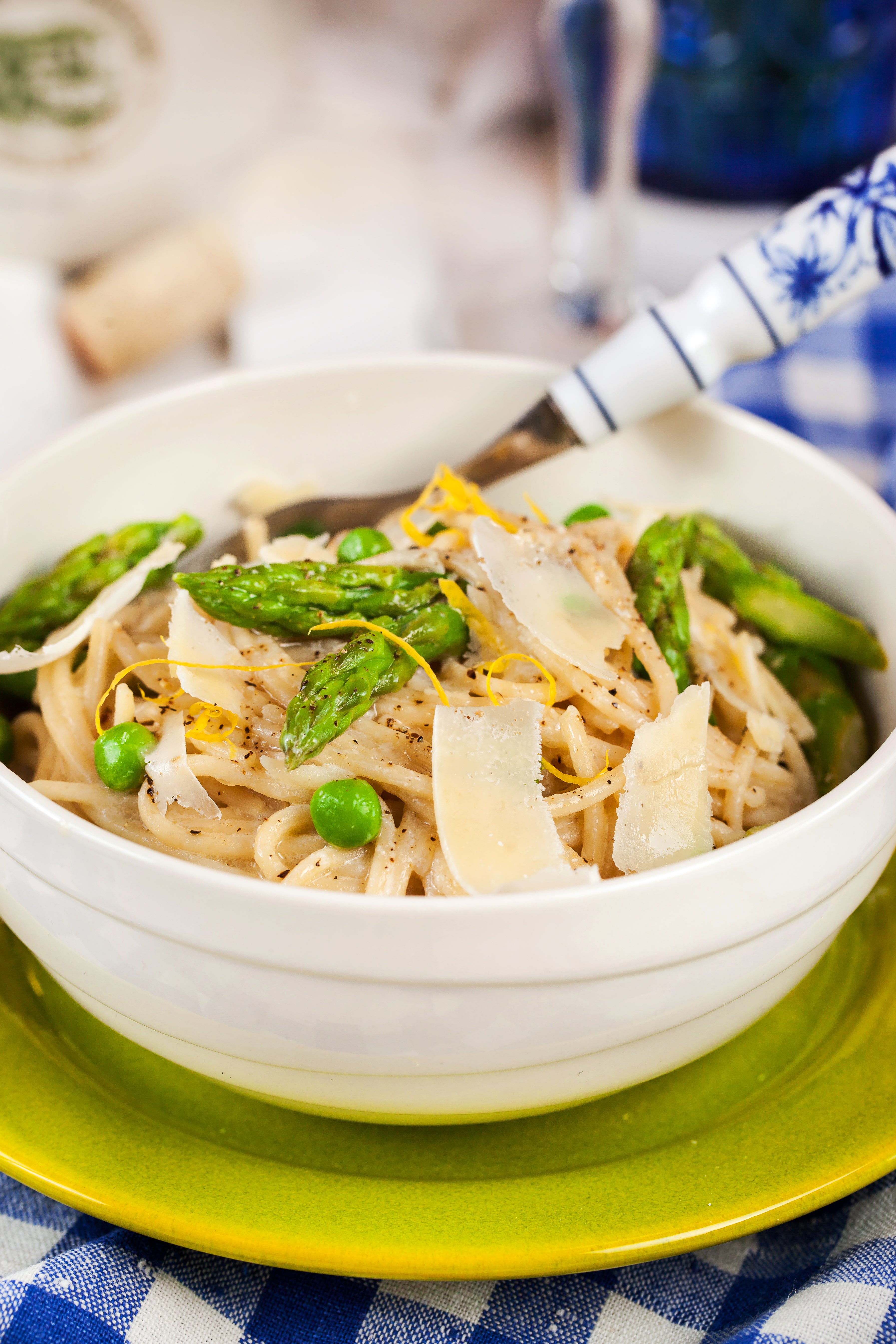
This simple pasta primavera uses a combination of the earliest vegetables available in spring – asparagus, peas and spring onions – making it a true celebration of the season. The sauce works best with springy egg pasta, preferably homemade or a good purchased brand. Make sure not to overcook it; you need the chewy bite to stand up to the gently cooked vegetables. If you can’t find good fresh peas, you can substitute frozen peas, but don’t add them until the last minute of cooking.
By: Melissa Clark
Makes: 4 servings
Total time: 20 minutes
Ingredients
115g sugar snap peas, stems trimmed
225g asparagus, ends snapped
2 tbsp unsalted butter
130g peas
25g thinly sliced spring onion, white part only (or use shallot)
2 garlic cloves, finely chopped
½ tsp fine sea salt, more as needed
Black pepper, more as needed
340g fettuccine or tagliatelle, preferably fresh
60g grated parmigiano-reggiano, at room temperature
115g creme fraiche or Greek yogurt, at room temperature
3 tbsp finely chopped parsley
1 tbsp finely chopped tarragon
Method
1. Bring a large pot of heavily salted water to a boil over medium-high heat.
2. While the water is coming to a boil, slice snap peas and asparagus stems into 0.5cm-thick pieces; leave asparagus tips whole.
3. Melt butter in a large frying pan over medium-high heat. Add snap peas, asparagus, peas and onion. Cook until vegetables are barely tender (but not too soft or mushy), 3 to 4 minutes. Stir in garlic and cook 1 minute more. Season with salt and pepper; set aside.
4. Drop pasta into boiling water and cook until al dente (1 to 3 minutes for fresh pasta, more for dried pasta). Drain well and transfer pasta to a large bowl. Immediately toss pasta with vegetables, Parmigiano-reggiano, creme fraiche and herbs. Season generously with salt and pepper, if needed.
One-pan pierogies with brussels sprouts and kimchi
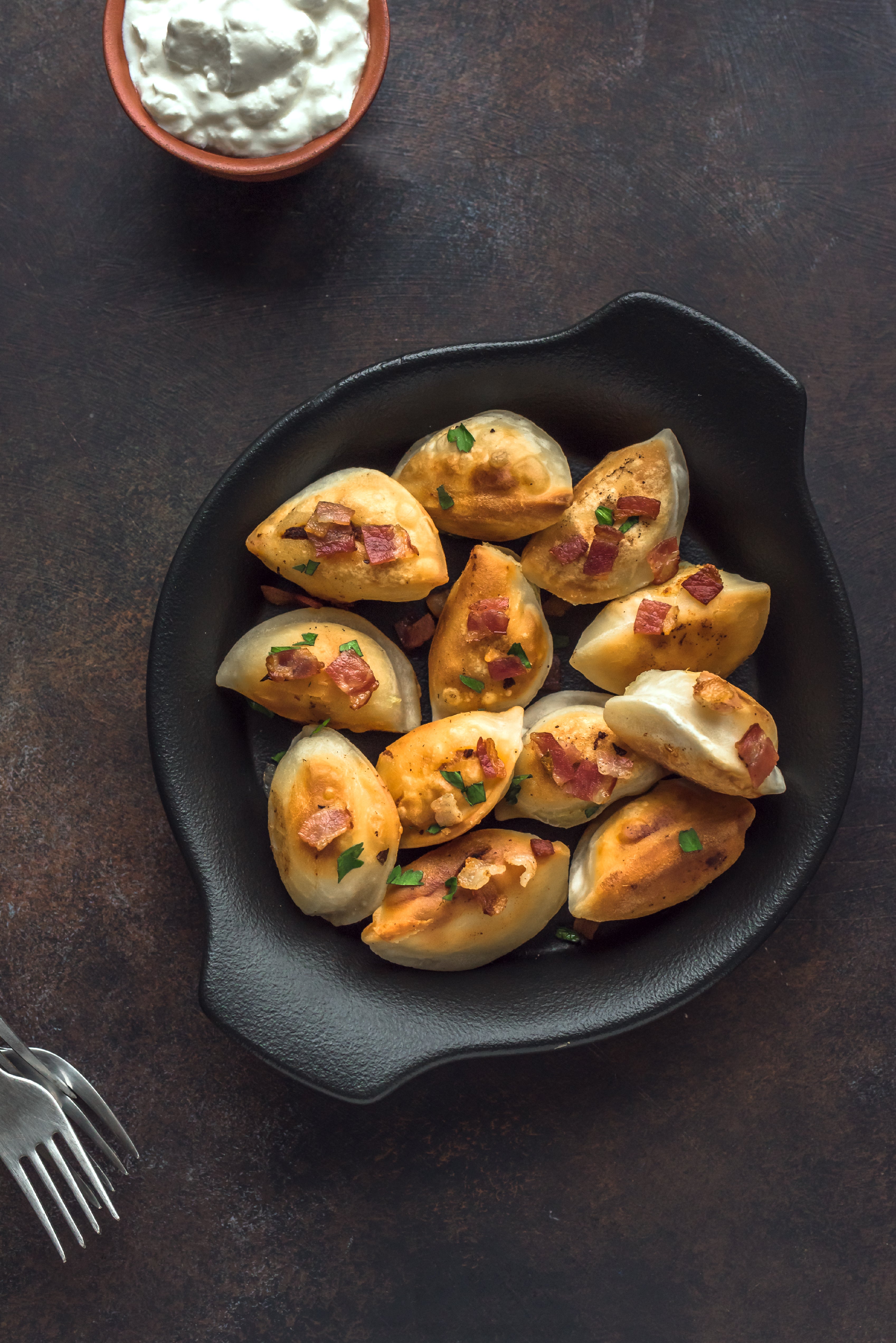
This one-pan dinner is a sure win in under an hour, with your oven doing most of the heavy lifting. Roasting pierogies yields a crisp, golden skin with a soft, pillowy interior but if you don’t have pierogies, you could use gnocchi in their place. (No pre-cooking required!) Cooking kimchi at high heat may feel like a surprising move, but it becomes sticky and caramelised, imparting lots of flavour and texture to the final dish. Finally, a dill sour cream adds a fresh richness, but feel free to swap out the sour cream and use a good-quality Greek yogurt, creme fraiche or even buttermilk (it will be runnier, so no need to thin with water).
By: Hetty McKinnon
Makes: 4 servings
Total time: 50 minutes
Ingredients
450g Brussels sprouts, trimmed and halved
225g cabbage kimchi
5 tbsp extra-virgin olive oil, plus more for drizzling
Salt and black pepper
2 (360-400g) packages fresh or frozen cheese or potato pierogies
½ small lemon, for serving
Handful of chopped dill, for serving
For the dill sour cream:
180g sour cream
5g chopped dill
1 tbsp extra-virgin olive oil
1 tsp lemon juice
½ tsp salt
Method
1. Set a rack in the lower third of the oven and heat oven to 200C. Add the Brussels sprouts and kimchi to a rimmed baking tray. (A small amount of kimchi juice is fine and adds lots of flavour.) Drizzle with 2 tablespoons of oil and season with salt and black pepper, and toss to combine.
2. Prepare the dill sour cream: combine the sour cream, dill, oil, lemon and salt in a small bowl and whisk to combine. If the cream is too thick, add a tablespoon of water. (You are looking for the consistency of heavy cream.)
3. After 15 minutes, remove the pan from the oven and add the pierogies. Drizzle everything with the remaining 3 tablespoons oil, and, using a spatula, toss everything together. Return to the oven, and roast until the Brussels sprouts are tender, and the pierogies are puffed and golden, another 20 to 25 minutes. (Don’t flip the pierogies.)
4. Drizzle with olive oil, scatter with dill, and serve with dill sour cream and halved lemon.
Grilled sausages, onions and peppers
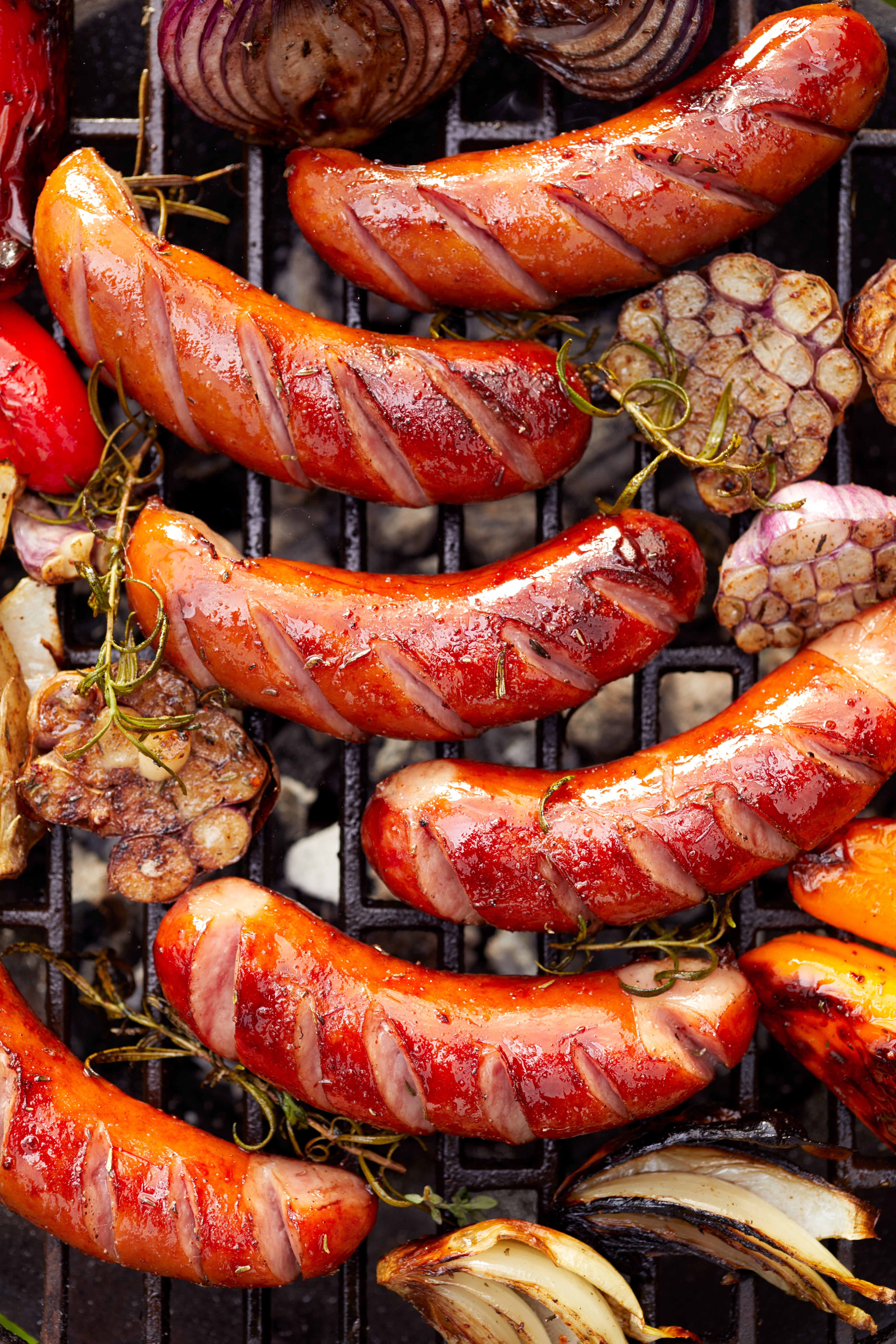
There is no more reliable guest at a barbecue than sausage, roasted over the open fire. But before you grill the meat, get some peppers and onions soft and dark and fragrant in the heat, and use these as a bed on which to serve the links. Italian sausage works beautifully here, as do hot links and bratwurst. If cooking brats, think about simmering them first in beer and onions, then finishing them on the fire.
By: Sam Sifton
Makes: 6 servings
Total time: 40 minutes
Ingredients
1 pound sweet peppers (green, red and yellow, if available) seeded and cut into eighths
2 large yellow onions, peeled and cut into large coins
3 to 4 tablespoons extra-virgin olive oil, more to taste
1/4 teaspoon salt, more to taste
2 pounds sweet or hot Italian sausages, or bratwurst or other fresh sausage
Method
1. Build a fire in your barbecue, leaving one side free of coals. When the coals are covered with grey ash and the temperature is medium (you can hold your hand 10-15cm above the coals for 5 to 7 seconds), you are ready to cook. (For a gas barbecue, turn all burners to high, lower cover and heat for 15 minutes, then turn burners to medium.)
2. Meanwhile, toss peppers and onions with oil and sprinkle with salt. Lightly prick sausages all over so that they do not burst.
3. Put peppers and onions in a grill basket or directly on the grill, turning occasionally until they are softened and dark at the edges, 10 to 12 minutes. Move them to the side of the grill without coals.
4. Place the sausages on the hot side of the grill, cover and cook, turning occasionally until they are cooked through, 8 to 10 minutes.
5. Transfer the peppers and onions to a platter and top with the sausages. Drizzle with olive oil and serve.
Salmon in parsley sauce
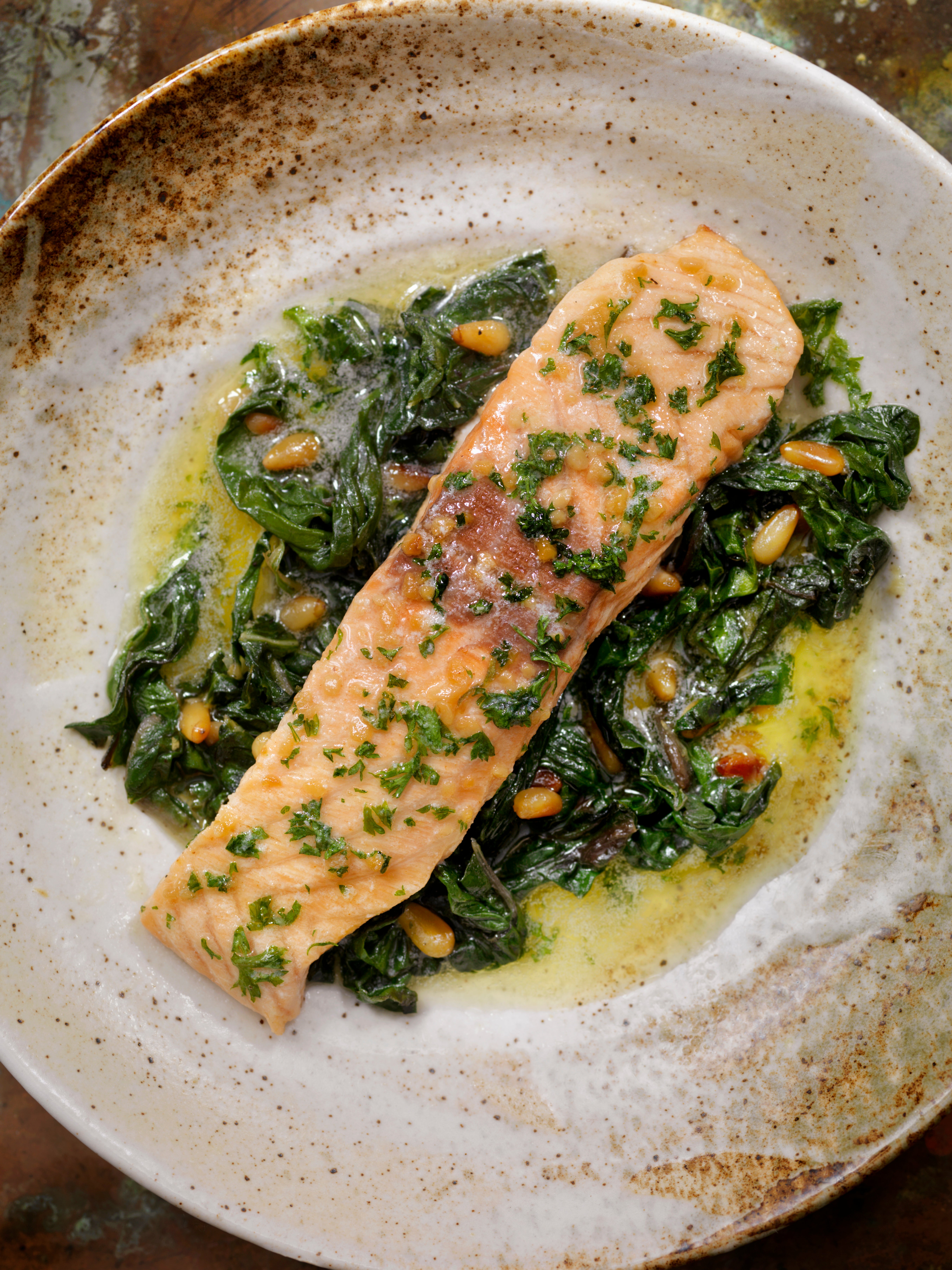
Parsley is the herb taken for granted. A few sprigs solve the garnish problem. A scattering of chopped leaves enlivens almost any dish with a bright bit of green. But parsley can take a more assertive role, becoming the primary component of a sauce. Here, flat-leaf parsley is combined with capers, scallions and garlic to make a sharp, verdant sauce for salmon. It contrasts perfectly with the richness of the fish.
By: Florence Fabricant
Makes: 6 servings
Total time: 20 minutes
Ingredients
3 tbsp finely chopped flat-leaf parsley
4 tsp capers
1 tbsp finely minced spring onion
1 tsp finely minced garlic
80ml extra-virgin olive oil
900g salmon fillets, cut into 6 portions
Salt and freshly ground black pepper
1 tbsp fresh lemon juice
Method
1. Combine the parsley, capers, spring onion and garlic in a bowl. Stir in half the olive oil. Set aside.
2. Preheat your grill. Brush the salmon with the remaining oil and grill close to the source of heat about two minutes on each side for medium-rare, or to desired degree of doneness. Remove from the heat and allow to rest for two minutes.
3. Season the salmon to taste with salt and pepper.
4. Add the lemon juice to the parsley mixture, drizzle or brush this mixture over the salmon and serve.
© The New York Times
Join our commenting forum
Join thought-provoking conversations, follow other Independent readers and see their replies
Comments